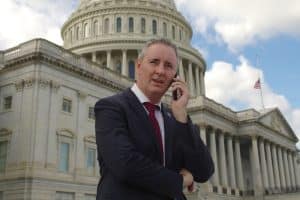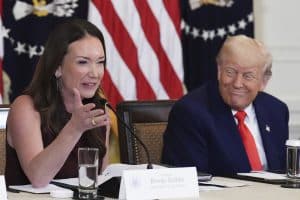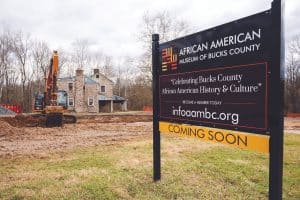In every conversation about the future of our country, we talk about education. We emphasize its importance, we link it to opportunity and equity, and we nod in agreement that it’s the foundation of a better tomorrow. And yet, despite this collective acknowledgment, education — particularly special education — remains underfunded, undervalued, and far too often overlooked.
In Pennsylvania, and right here in the Central Bucks School District, this contradiction is especially stark. While education is widely seen as a pillar of a thriving society, budgetary priorities at both the state and local levels consistently fail to reflect that belief. Those who dedicate their lives to teaching — especially in special education — are paid significantly less than professionals in other fields. Many are forced to take on second jobs just to meet basic needs, all while managing classrooms that demand not only deep expertise, but tremendous patience, empathy, and resilience.
Special education is not a secondary program; in fact, it is a vital component of a healthy public school system. Yet, it is too often treated like a side room, both literally and figuratively. The students in these programs are some of the most unique, vibrant, and capable individuals in our schools. Still, they are frequently unseen by staff, by peers, by administrators, and often by the district itself. The painful truth is this: special education students, and the professionals who support them, are largely invisible in the broader education conversation.
The people who show up in these classrooms every day are not doing it for the paycheck. They are driven by love, by purpose, and by an unwavering belief in the potential of every student. Their work is emotionally complex and physically demanding. It requires continuous training in behavior management, communication strategies, assistive technology, and trauma-informed care. They are educators, therapists, advocates, and protectors — all in one.
Why, then, are they so often overlooked in policy discussions? Why are their classrooms under-resourced? Why are their voices absent from boardroom conversations?
The recent events in our district have brought these questions into sharper focus. Over the past few months, Central Bucks has faced a deeply troubling situation involving alleged mistreatment of a student in special education—an incident currently under investigation. When the news first broke, many of us were in shock. How could this happen? we asked.
Some of us hoped it was a misunderstanding, or that it involved someone untrained or new to the role. What I know from my experience, though, is that the majority of our special education staff are highly qualified, compassionate, and deeply committed to doing what’s right for their students.
It has been heartbreaking to hear the details. But perhaps equally disheartening has been the reaction that followed—especially in public discourse and school board meetings. Since the incident came to light, the tone of these meetings has become increasingly political, rather than student-centered. Instead of working collectively to support students and staff, the conversation has become divisive, posturing rather than problem-solving. That approach does not serve our students—it only deepens misunderstanding and mistrust.
Let me be clear: any allegation involving a child must be taken seriously. If something wrong occurred, accountability and transparency are essential. But it is not fair—nor is it responsible—to cast judgment on every teacher, aide, and support professional working in special education based on one incident.
READ: Justice Is Evasive for Allegedly Abused Autistic Students at Central Bucks Elementary School
In my building, I see what the public often doesn’t. I see my administration and educators who greet their students each morning with warmth, patience, and an unwavering commitment to their well-being. These are professionals managing intense situations — students in crisis who may hit, kick, throw objects, or have emotional breakdowns. And they handle it all with care, professionalism, and dignity. They do this under pressure, under scrutiny, and often for less than $20 an hour.
Since the incident was made public, many support staff have become fearful. Some are now afraid to even place a hand on a student — something that may be necessary for de-escalation or safety. That fear is a symptom of a system that has failed to clearly support and protect its own workforce.
Another issue that cannot be ignored is the lack of consistent engagement from district leadership. Too often, staff members report that special education department heads rarely visit buildings or meaningfully listen to the concerns of frontline educators. That distance fosters a sense of being unsupported, unheard, and forgotten.
Communication between parents and educators is another essential part of this conversation. When families and teachers collaborate in trust, students benefit. But that relationship requires open dialogue and mutual respect. Parents must be included, and teachers must be backed in their efforts to advocate for what their students need.
Let me say this again: I am not denying that something wrong may have happened. But I am asking that we take a broader, more nuanced view. Most of our staff are doing deeply difficult, extraordinary work—quietly, daily, and with integrity. Painting them all with one brush only does harm.
So where do we go from here? We ask ourselves hard but necessary questions:
• How did we get here?
• How do we support our educators better?
• How do we rebuild trust between families, schools, and the district?
• How do we ensure that our response is rooted in student-centered solutions—not political blame?
Special education deserves more than reactive conversations and temporary concern. It deserves sustained investment, public recognition, and structural support. It deserves leaders who listen and communities that stand in solidarity with the people doing the work.
Because education isn’t just about preparing for the future — it’s about who we choose to see in the present. And it’s time we truly see our special education students and the professionals who serve them every day.






